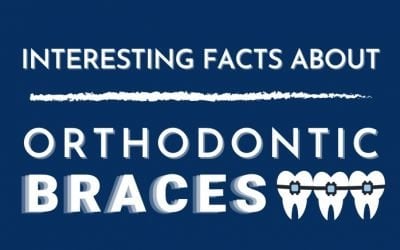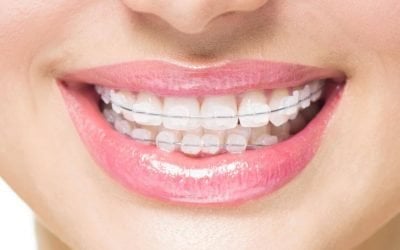Straight Talk About Braces for Adults
Does the word braces call to mind a teenager with a mouth full of metal? If so, it’s time to rethink that picture.
These days, people of all ages want to straighten their teeth. In fact, a huge number of adults are hopping on the braces bandwagon to get the grin they’ve always wanted.
“When I started practising in the ’90s, I was lucky if 1% of my clients were adults,” says Sunil Wadhwa, DDS, PhD, director of orthodontics at the Columbia University College of Dental Medicine. “It was unheard of for adults to get braces. Now, about 50% of my patients are adults. It’s definitely our fastest-growing segment.”
Atlanta’s Elizabeth Stearns got her braces at age 32. She wanted to fix a crossbite — when teeth don’t align as they should. Mostly, though, she wanted to feel better about her smile. After checking out her choices, she went for it and called an orthodontist, a type of dentist who specializes in braces.
He told her she’d be in braces for about 12-18 months, she says. “It seemed like such a short amount of time for a lifetime of comfort and being happy with my teeth. To me, it was totally worth it.”
Today’s teeth are staying stronger longer. “A generation ago, adults didn’t always keep their teeth, much less straighten them,” says Leslie A. Will, DMD, of Boston University’s Henry M. Goldman School of Dental Medicine.
We’ve gone beyond tooth survival, she adds. “People want their teeth to be healthier. They want their bite to be better, and they want them to look great.”
Bracing Yourself for Treatment
Braces can straighten teeth, line up your jaws to give you a better bite, space out crowded teeth, and close gaps in your smile. But before you commit to tooth correction, it’s good to know exactly what you’re getting into.
When you have them, you’ll need to:
- Make time for checkups. “I usually see people every 4 to 6 weeks,” Will says. “Sometimes adults get very busy, but they have to be willing to come.”
- Watch what you eat. “It’s important to be really careful around hard or sticky foods so you don’t break off the brackets,” she says.
- Brush and floss longer than before. “Hygiene is going to be more difficult with the appliances on their teeth,” she says.
Questions to Ask Your Orthodontist
You’re going to see him a lot over the course of your treatment, so find someone you’re comfortable with.
Here are a few things to find out at your first visit:
- What options will work for my teeth?
- How long will I wear them?
- How do I take care of my teeth while they’re on?
- How often will I need to come in for an office visit?
- How much will they cost?
- Does your office offer payment plans?
- Do you accept my insurance?
- What happens after I get them off?
Lining Up Your Options
There’s more than one path to straight teeth. The type of treatment you choose depends on how your teeth need to move to streamline your smile.
Regular braces: These use gentle pressure to move your teeth into place over time. Your orthodontist will glue brackets to the front of your teeth and connect them with a wire. He’ll tighten that wire every 4 to 6 weeks. This slowly moves your teeth or jaw or both into place.
It depends on your treatment, but the average adult has braces for 18 months to 3 years. It usually costs between $5,000 and $6,000.
Other braces: If having a metal smile bothers you, ceramic braces are another option. The brackets are the color of your teeth, which makes them harder to see. They usually cost more than their metal cousins.
Ask about getting braces on the back of your teeth instead of the front to hide the metal brackets.
Clear aligners: You can skip the wires and brackets with these see-through plastic trays that fit over your teeth. You can take them out to eat, brush, and floss. The downside: They’re not stuck to your teeth, and they’re easy to lose.
They’re really meant to shift teeth around, Wadhwa says. If you need to close a big gap between teeth, metal braces are the better choice.
Veneers: These thin, tooth-coloured layers of porcelain go on top of your existing choppers. They’re a way to fix small, chipped, dull, or stained teeth.
“Veneers are the quick way to make your smile look better without moving your teeth,” Wadhwa says. But they also may come at a cost. In some instances, your dentist may shave off part of your original tooth before he puts them on.
After Treatment
Cleaning your teeth may get easier once your teeth are straighter, but that’s not your cue to slack off, says Adityah Chhibber, assistant professor of dental medicine at the Columbia University Medical Center.
“Most people think their crowded teeth are the reason they have periodontal disease,” Chhibber says. “They think once they have straight teeth, they won’t have those problems any more, but evidence doesn’t support that.”
Bottom line: if you don’t do a good job cleaning your teeth now, braces won’t fix that. So brush up — whether you have them or not. The more you work at it, the easier it becomes to get them clean.
When to Straighten and When to Wait
Poor gum health can put the brakes on braces. If you have active gum disease, now isn’t the time to tackle orthodontics.
It doesn’t mean you can never have braces, but you need to treat the gum disease first, Will says.
As far as age goes, however, it’s never too late to create a perfect smile.
As long as your bones and gums are healthy enough to withstand the forces, you should be OK to get them, Chibber says. “We have patients out here in the clinic from 8 years old to almost 80 years old.”
“Sometimes adults come in and say, ‘I’m 45, that’s getting old,'” Will says. “And I say, ‘Not at all! You should have another 50 years on those teeth!’ Why not have your teeth look as good as possible for as long as possible?”
To read the original article, click here.
DISCLAIMER:
The content has been made available for informational and educational purposes only. Central Coast Orthodontics does not make any representation or warranties with respect to the accuracy, applicability, fitness, or completeness of the content.
The content is not intended to be a substitute for professional personal diagnosis or treatment. Always seek the advice of your dentist or another qualified health provider with any questions you may have regarding a dental or medical condition. Never disregard professional advice or delay seeking it because of something you have read or seen on the Site.
Learn More About
Related Articles
Interesting Facts About Orthodontic Braces
Wanting to get orthodontic braces but feeling unsure because you don't have knowledge about its...
Three Benefits of Invisalign
Did you know that aside from being an option for straightening your teeth, there are also benefits...
Metal Braces: Does This Traditional Dental Technology Have a Future?
Of all the medical professions, dentistry has always generated the most fear and continues to;...
Ceramic Braces: Ancient Origins, Bright Future?
What exactly is ceramic? Essential to daily life and classified as inorganic and non-metallic...







